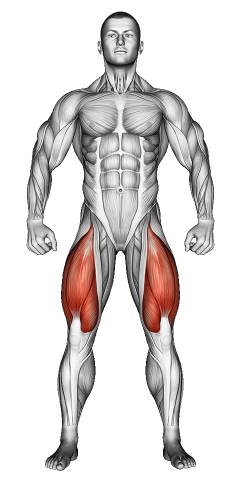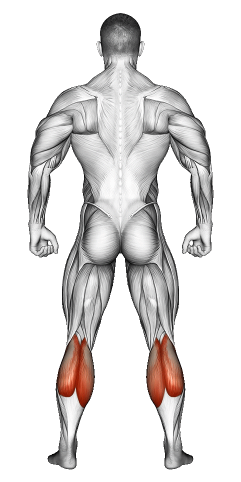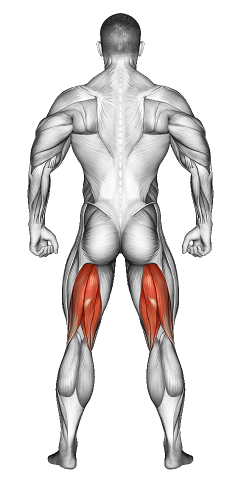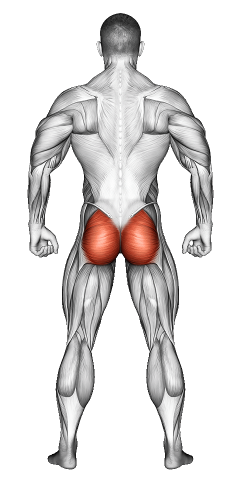Bodyweight Sumo Squat: Video Tutorial & Exercise Guide

Written By: Claude Michael
Updated: Oct 13, 2024
| Workout | Bodyweight Sumo Squat |
| Primary Muscle Group | Quads |
| Secondary Muscle Group | Hamstrings, Glutes Calves |
| Equipment Required | Bodyweight |
| Force Type | Push |
| Mechanics | Compound |
| Exercise Type | Strength |
| Difficulty | Intermediate |
Bodyweight Sumo Squat: Video Tutorial & Exercise Guide
- 1.Bodyweight Sumo Squat: Muscle Groups
- -1.1Primary Muscle Group
- -1.2Secondary Muscle Group
- 2.Bodyweight Sumo Squat: Step-by-Step Guide
- 3.Bodyweight Sumo Squat: Overview
- 4.Bodyweight Sumo Squat: Benefits
- 5.Bodyweight Sumo Squat: Pro Tips & Advanced Techniques
- 6.Bodyweight Sumo Squat: Progression Plan
- 7.Bodyweight Sumo Squat: Frequently Asked Questions (FAQs)
Secondary Muscles Group
Bodyweight Sumo Squat: Step-by-Step Guide
- Step 1: Stand with your feet wider than shoulder-width apart, toes pointing out at a 45-degree angle. Keep your chest up, shoulders back, and core engaged.
- Step 2: Begin by bending your knees and pushing your hips back, lowering your body into a squat position. Ensure your knees track in line with your toes and do not collapse inward.
- Step 3: Lower your body until your thighs are parallel to the floor or slightly below, keeping your back straight and chest up throughout the movement.
- Step 4: Press through your heels to rise back up to the starting position, squeezing your glutes at the top of the movement.
- Step 5: Repeat for the desired number of repetitions, focusing on controlled movement and proper alignment throughout the exercise.
Bodyweight Sumo Squat: Overview
The Bodyweight Sumo Squat is a lower-body exercise that specifically targets the inner thighs, glutes, quads, and hamstrings. By taking a wider stance and pointing the toes outward, the sumo squat places greater emphasis on the inner thigh muscles (adductors) compared to a traditional squat. This exercise is excellent for improving flexibility, strengthening the lower body, and building endurance without any equipment.
The sumo squat is suitable for beginners and advanced athletes alike, and can be modified by adding weight or performing the movement slower to increase time under tension.
Bodyweight Sumo Squat: Benefits
The Bodyweight Sumo Squat strengthens the lower body, focusing on the glutes, quads, hamstrings, and inner thighs. The wide stance of the squat increases hip flexibility and engages the adductors more effectively. This exercise also improves balance, mobility, and muscular endurance, making it a valuable addition to any fitness routine.
Additionally, because the sumo squat targets multiple muscle groups, it helps to improve overall lower-body stability, which is crucial for activities like running, jumping, and lifting.
Bodyweight Sumo Squat: Pro Tips & Advanced Techniques
Focus on keeping your back straight and chest lifted throughout the movement to avoid rounding your spine. Ensure that your knees follow the same direction as your toes and do not cave inward during the squat. For an added challenge, you can hold a dumbbell or kettlebell in front of your chest (goblet style) or increase the time spent in the squat position by slowing down the descent and ascent.
Bodyweight Sumo Squat: Progression Plan
Beginner
Intermediate
Advanced
Bodyweight Sumo Squat: Frequently Asked Questions (FAQs)
What muscles do Bodyweight Sumo Squats target?
+Bodyweight Sumo Squats primarily target the glutes, quads, hamstrings, and inner thighs (adductors) while also engaging the core for stability.
Can beginners perform Bodyweight Sumo Squats?
+Yes, this exercise is beginner-friendly and can be done using just bodyweight. Beginners should focus on proper form and alignment before progressing to weighted variations.
How can I make Bodyweight Sumo Squats more challenging?
+To increase the difficulty, hold a dumbbell or kettlebell in a goblet position, or slow down the descent and ascent of the movement to create more tension in the muscles.
What common mistakes should I avoid during Bodyweight Sumo Squats?
+Avoid letting your knees cave inward or rounding your back. Ensure that your knees track over your toes and that your chest remains lifted throughout the movement.
How often should I include Bodyweight Sumo Squats in my routine?
+Incorporate this exercise 2-3 times per week as part of your lower body or full-body workout routine to strengthen the legs and improve mobility.
Share
Don’t Wish for It, Work for It – Join the FlexXP Newsletter Today!
Thank you for signing up for the FlexXP Newsletter!
This site is protected and the Google Privacy Policy and Terms of Service apply.



